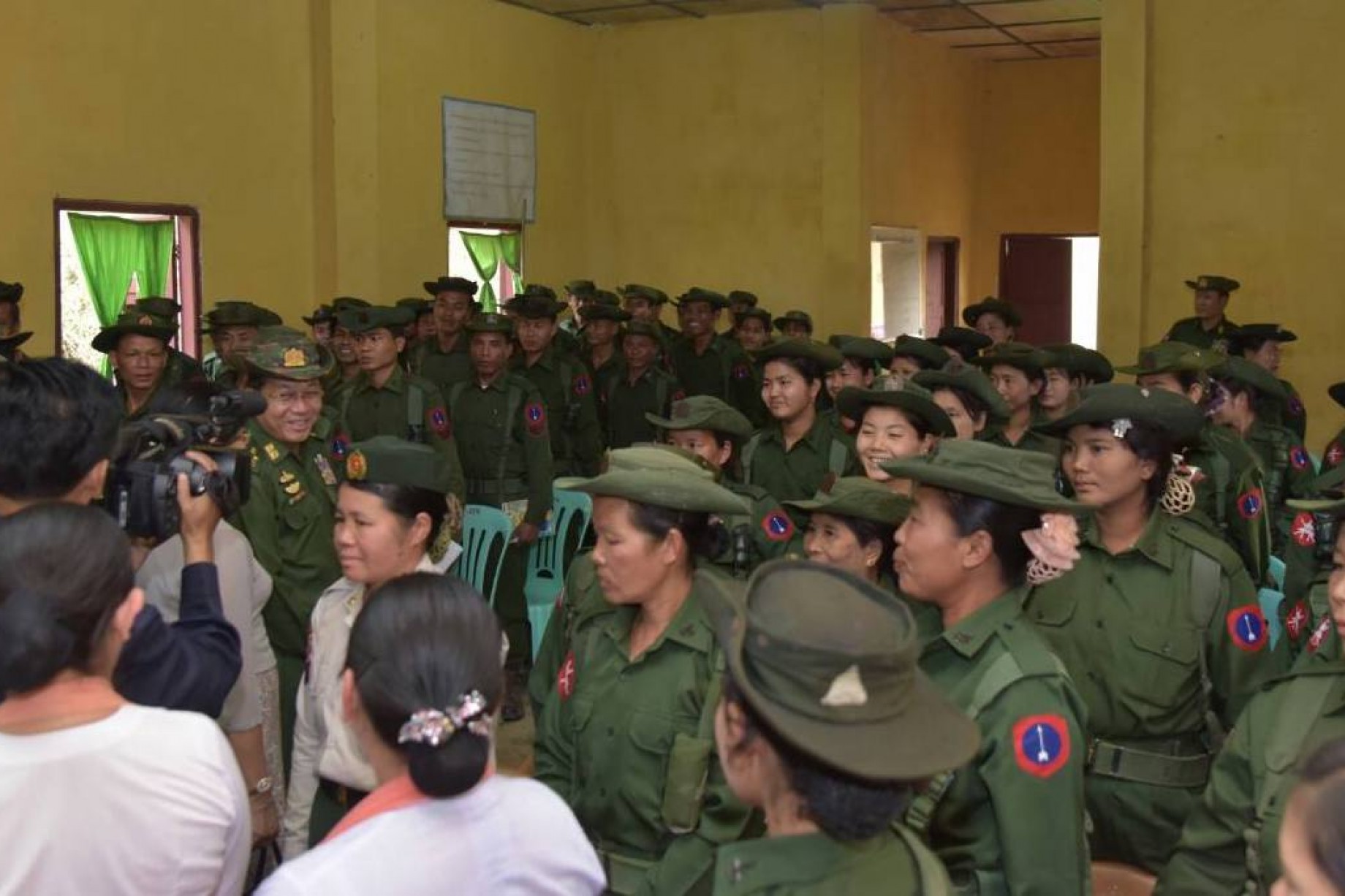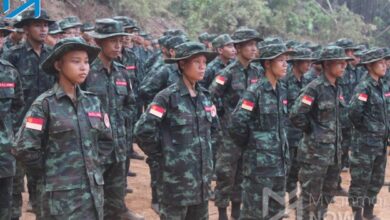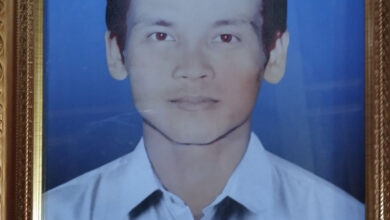
Faced with unprecedented nationwide armed resistance, Myanmar’s military is reportedly recruiting young women into its forces in what defecting officers say may be part of a strategy to bolster troop numbers.
An advertisement in the junta mouthpiece The Mirror this week invited women aged 18 to 25 who have completed Grade 9 to join the military’s reserve force.
Yet officers who left the army to join the Civil Disobedience Movement (CDM) told Myanmar Now that Monday’s announcement may mark an expansion of the administrative duties typically assigned to women in the military.
“Now that the military has lost so many people on the frontlines, we are not sure what they are planning for [these female soldiers],” said Cpt Nyi Thuta, an officer participating in the CDM. “It appears that they want to use those women in the infantry and light infantry battalions as well.”
He speculated that the military may be replacing soldiers killed on the frontlines with male officers from administrative departments, military intelligence, and medical officers. They may also be planning to fill the roles left vacant with new women recruits, the captain added.
Nyi Thuta explained that in recent years, there had been seven separate entry-level intakes specifically for female recruits, with 200 women completing each course and attaining the rank of private. Since 2014, there have also been similar annual intakes for women to complete cadet training programs, with the eighth group graduating in December last year.
Wives of soldiers living in military barracks have also previously been dubbed “female officers” and made to undergo basic combat training, another CDM officer, Cpt Ye Min Oo, explained.
“They have two to three training courses every four months. There, they’d be trained on how to use various heavy and light weapons,” he told Myanmar Now.
“They were initially only given military training ‘on paper’ but they are also enlisted as the army’s back-up forces. They had to provide security for the military if the need arose,” he continued. “It was worse in infantry and light infantry battalions. They constantly had to stand guard as there was no one else to do so,” he added.
These women were not paid for their duties, he added, as they were not officially enlisted as troops in the armed forces.
The presence of women among junta military columns has been noted by locals and members of the resistance in clashes since the coup.
In an October 2021 attack on the Light Infantry Battalion 336 in southern Shan State by the Pekhon Township People’s Defence Force (PDF), three of the five guards killed at the post were women, according to the resistance group.
Villagers told Myanmar Now in early May that several female soldiers were seen among the junta units launching assaults throughout Sagaing Region.
In the years prior to the coup, military commander-in-chief Min Aung Hlaing encouraged the wives of Myanmar army soldiers to use their combat training to fight the Kachin Independence Army (KIA) during an official visit to a battalion in Kachin State’s Tanai Township in 2018. He applauded the women who were serving in the army and police units there and who had participated in previous clashes with the KIA.
It was a “fair war,” he reportedly noted at the time.
His wife, Kyu Kyu Hla, distributed gifts and reward money to the women in the armed forces on the visit.

Recruiting ‘as many people as possible’
While junta officials have claimed that Myanmar’s army has up to 500,000 soldiers, independent analysts have estimated its numbers to be around 350,000; its actual membership is unconfirmed.
The defence ministry of the National Unity Government reported in mid-May that some 15,000 junta soldiers were killed and 5,000 injured in clashes with anti-coup forces over the past year.
Despite attempts to raise troop numbers, the military’s Defence Services Academy in Pyin Oo Lwin, which typically recruits at least 500 cadets annually, received only 22 applications from the major recruiting ground of Mandalay last year, officers in the CDM previously told Myanmar Now.
In addition to recent efforts to recruit women, the military is also reportedly calling on retirees, police and villagers to defend the coup regime.
“They’re trying to get as many people as possible to work for them. They’ve even recruited the retired officers to return to work as security guards,” a spokesperson for the Kanbalu PDF in Sagaing Region said. “They’re trying to replace their dead soldiers,” he added.
Another military strategy has been to arm civilians sympathetic to the junta, creating militias known as the Pyu Saw Htee, which typically operate in rural areas. There have also been reports of villagers being abducted by the military and forced to join these networks, the PDF spokesperson said.
“They want to use the civilians but they still don’t trust them enough to give them proper weapons. They gave them poor-quality carbines. Then they send those people out to the frontlines to die,” he commented.
On March 25, the military amended the country’s Police Force Law to enlist members of the police to join the fight against anti-coup resistance forces by calling on them to “take part in the state’s defence and security affairs when necessary.”
The move marked an expansion of traditional Myanmar police responsibilities of “law enforcement, public safety and drug control” to a role more in line with those serving in the armed forces.
Cpt Nyi Thuta, the officer who joined the resistance, also pointed out that the age of retirement for soldiers has also been recently raised from 60 to 62, suggesting a move by the armed forces to retain its current members for as long as possible.
“These are all signs that [the military] is getting weaker,” he told Myanmar Now.
![Resistance fighters holding heavy weapons ammunition in central Myanmar. (Photo: Freedom Revolution Force [FRF])](https://myanmar-now.org/en/wp-content/uploads/sites/5/2024/04/438869056_443267851680128_1706386881626943924_n-390x220.jpeg)


